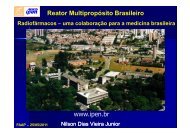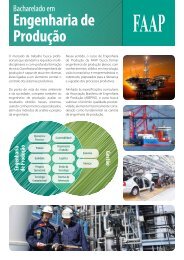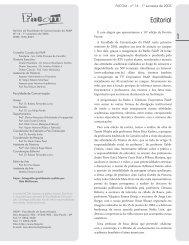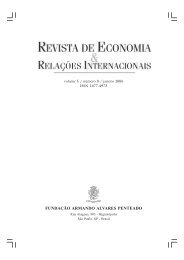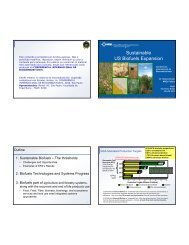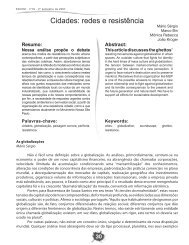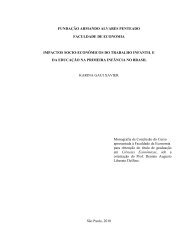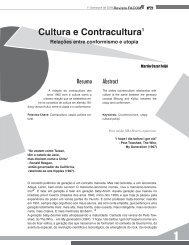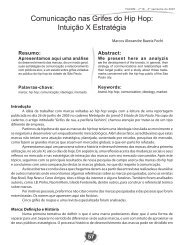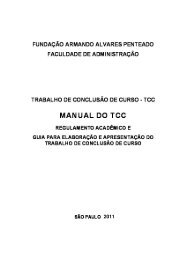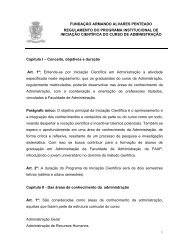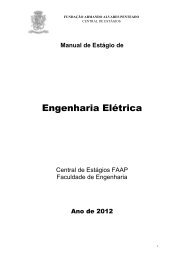Revista Estratégica vol.10 - Faap
Revista Estratégica vol.10 - Faap
Revista Estratégica vol.10 - Faap
Create successful ePaper yourself
Turn your PDF publications into a flip-book with our unique Google optimized e-Paper software.
depreciation of surrounding properties, generation of degraded areas and urban traffic<br />
disturbances. These same externalities generate conflicts in the community, which<br />
usually originate on the implementation of the project because the developer does not<br />
seek information about the expectations, desires and concerns of residents living near<br />
the mining company (BITAR, 1997).<br />
The distortion of the landscape caused by the opening of the mine front sets up a<br />
substantial impact, almost always being the first one to be noticed in the clay mining<br />
enterprises. It is not just a visual impact but also a geomorphological change expressed<br />
by changes in morphology and in flows of matter and energy existing in the system.<br />
The pit resulting from the extraction of clay and deposits of sterile material alter the<br />
local topographic forms, which can result in a number of other indirect changes, causing<br />
modifications in current morphological processes, such as changing directions of<br />
flows of water runoff, determining that areas under the control of the erosive effects<br />
become environments of deposition and vice versa (COLTURATO, 2002).<br />
According to Brushi and Peixoto (1997), materials released in the extraction process<br />
tend to move around the strands until they reach the river channel, causing siltation.<br />
The increased bed load, in general, echoes in increased bank erosion, once the drainage<br />
tends to seek its equilibrium profile by extending the thalweg in a geometric pattern<br />
more appropriate in order to transport the imputed mass into the system, sometimes<br />
incompatible with its capability.<br />
The sediments are also released by waste dumps without stability arranged in<br />
plots, where the retaining walls are absent or inadequate. In addition, it also degrades<br />
the soil on which it is laid, as well as the existing vegetation that is buried<br />
by the overlying tailings.<br />
Another pressing problem to be considered in mine planning refers to the aeolian<br />
transportation of small size materials ; this property is intrinsic to the sterile clay, when<br />
uncompressed. The particles can sometimes be transported to considerable distances,<br />
beyond the area of the mining influence , thus expanding the spatial extent of impacts.<br />
Fish culture activity as a strategic tool for the recovery of<br />
degraded areas<br />
Mining is a degrading activity and one of the largest contributors to the process of<br />
environmental change, affecting not only the local landscape, but the entire ecosystem<br />
dynamics. Nevertheless, mineral resources are essential inputs and are part of virtually<br />
all human activities.<br />
There are many studies that aim at the recovery of areas degraded by mining. But<br />
when it refers to a line of innovative research, such as the use of armholes for fish production,<br />
it tends to draw the attention of companies. Several study centers have been<br />
Innovation applied to the recovery of degraded areas..., Marcelo R. dos Anjos, Francisco A. de Andrade e Pamela M. R. Monte, p. 23-36<br />
25



